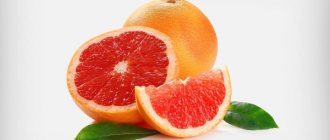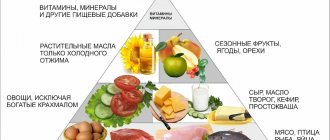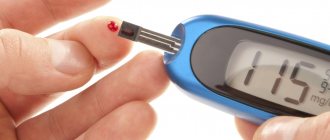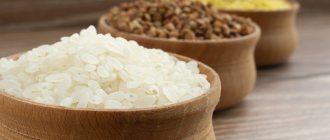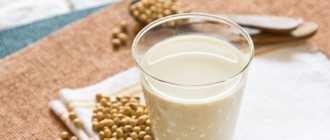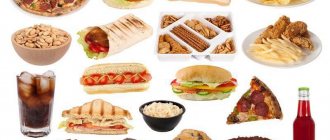Diet number 9 for diabetics
In some countries, diet table number 9 is traditionally used for the treatment and prevention of diabetes. It can be prescribed for mild to moderate diabetes mellitus in the absence of concomitant diseases of internal organs and acidosis. With this nutritional system, the protein content exceeds the physiological norm, but the amount of carbohydrates and fats (mainly animals) is moderately limited. Easily digestible carbohydrates are excluded. The diet contains substances that have a lipotropic effect.
The diet should contain a lot of vegetables. Cholesterol-rich foods and salt are limited when following the diet table number nine. Sweets and sugar are practically excluded - the exact norm is regulated by the attending physician. Instead of sugar, artificial and natural substitutes are used. Mostly food is consumed baked or boiled. Fried or stewed foods are allowed on the table. The food temperature is normal.
The diet involves 5-6 meals per day. Carbohydrates are distributed in equal portions throughout the day. Such a nutritional system prevents lipid metabolism disorders, helps normalize carbohydrate metabolism, and helps determine carbohydrate tolerance.
Content:
General rules
What is diabetes mellitus and what diet is indicated for this disease? Diabetes mellitus is a disease that occurs when the pancreas does not produce enough insulin. It often develops with a hereditary predisposition, and one of the factors contributing to its development is overeating, excess consumption of fats and simple carbohydrates. The disease is based on carbohydrate metabolism disorders: poor absorption of glucose by tissues, increased formation of it from fats, proteins and glycogen .
As a result, there is an increase in blood sugar and its determination in the urine. Diabetics are also characterized by disorders of fat metabolism and accumulation of fat oxidation products in the blood - ketone bodies .
Diabetes mellitus is complicated by atherosclerosis , fatty liver , and kidney damage. Nutrition is a therapeutic factor in mild forms of the disease, the main point in moderate diabetes, and necessary for the treatment of severe forms while taking insulin and oral hypoglycemic drugs.
Patients are prescribed Diet No. 9, Table No. 9 according to Pevzner or its variations. This medical diet provides for the normalization of carbohydrate metabolism, and a balanced diet prevents disorders of fat metabolism. Dietary Table No. 9 is distinguished by a moderately reduced energy value due to a significant reduction in carbohydrates (easily digestible, simple) and fats. Sugar and confectionery products are excluded, salt and cholesterol . The amount of proteins is within the physiological norm. Therapeutic nutrition is prescribed by a doctor depending on the degree of hyperglycemia , the patient’s weight and concomitant diseases.
With normal weight, the daily calorie intake is 2300-2500 kcal, 90-100 g of protein, 75-80 g of fat and 300-350 g of carbohydrates, which, at the discretion of the doctor, is distributed between intake with bread or cereals and vegetables.
Nutrition is of particular importance when combined with obesity . Weight loss has a beneficial effect on the course of diabetes - reduced sensitivity to insulin . If you are overweight, calorie content is reduced to 1700 kcal due to a significant restriction of carbohydrates to 120 g per day. In this case, the patient receives 110 g of protein and 80 g of fat. The patient is also shown fasting diets and days.
Diet table No. 9 for mild diabetes mellitus
- sugar;
- preserves, jams;
- confectionery;
- ice cream;
- syrups;
- sweet fruits and vegetables;
- pasta;
- White bread.
It is recommended to limit or exclude:
- potatoes, as a highly starchy product;
- carrots (for the same reasons);
- tomatoes due to their high glucose content;
- beets (has a high glycemic index, after its consumption there is a jump in blood sugar levels).
Since nutrition for diabetes is based on limiting carbohydrates, it is advisable to choose even fruits with a glycemic index (GI) of up to 55: grapefruits, lingonberries, apricots, cherry plums, apples, cranberries, peaches, plums, cherries, sea buckthorn, red currants, gooseberries. But even these fruits should be consumed in limited quantities (serving up to 200 g).
When consuming foods with a high GI, blood sugar levels rise greatly, which causes increased insulin . It should also be taken into account that heat treatment of vegetables increases the GI, so stewed zucchini, eggplant, and cabbage can adversely affect sugar levels.
It must be remembered that sugar and its products are excluded in mild cases of the disease, and against the background of insulin therapy for moderate and severe diabetes mellitus, 20-30 g of sugar are allowed. Thus, the treatment table is modified by the doctor depending on the severity of the disease, the intensity of the patient’s work, weight, age and insulin therapy. This is done by regulating carbohydrate content.
In all cases, be sure to include in the diet:
- eggplant;
- red salad pepper due to its high vitamin ;
- pumpkin (helps reduce glucose);
- zucchini and squash, which normalize carbohydrate metabolism;
- lipotropic products (cottage cheese, oatmeal, soy).
Since carbohydrates must be present in the diet and provide 55% of the daily energy value, it is necessary to include sources of slowly absorbed carbohydrates with dietary fiber: wholemeal bread, legumes, whole grain cereals, vegetables, fruits.
It is advisable to adhere to the following distribution of the energy value of the diet:
- 20% should be for breakfast;
- 10% - for second breakfast;
- 30% - for lunch;
- 10% - afternoon snack;
- 20% - dinner;
- 10% on overnight meals.
The diet includes xylitol , fructose , or sorbitol at the expense of total carbohydrates. For taste, it is allowed to add saccharin .
Xylitol is equivalent in sweetness to regular sugar and its daily dose is no more than 30 g.
Fructose has low calorie content and low GI, and is twice as sweet as sugar, so adding 1 tsp is enough. in tea. With this dietary diet, the amount of salt is limited (12 g per day), and according to indications (for nephropathy and hypertension ) it is further reduced (2.8 g per day).
Diet No. 9 for diabetics: what is possible, what is not?
While following the diet, the following foods are allowed:
- Unsweetened compotes using sugar substitutes, juices from unsweetened fruits, vegetables and berries, coffee with milk, rosehip decoction.
- Flour non-food products, wheat, protein-wheat, rye bread made from second-grade flour. The daily norm is about 300 g.
- Unsalted ghee and butter.
- Low-fat and half-fat cottage cheese, unsalted cheese, fermented milk products and milk, sour cream in small quantities.
- Lean meat.
- Canned fish in tomato or its own juice, low-fat fish.
- Eggs in the form of omelettes or soft-boiled (one or two eggs per day).
- Low-fat sauces based on weak mushroom, fish and meat broths.
- Porridges made from pearl barley, oatmeal, barley, millet and buckwheat.
- Cooked and raw vegetables - legumes, eggplants, cabbage, lettuce, tomatoes, cucumbers. In limited quantities carrots, beets, green peas, potatoes.
Prohibited for use:
- Cakes, puff pastry and pastry products.
- Sweet curd cheeses, cream, salty cheeses.
- Fatty, strong broths.
- Milk soups with noodles, rice, semolina.
- Sausages, sausages, smoked meats.
- Cooking and animal fats, pickled and salted vegetables.
- Dates, figs, bananas, raisins, grapes.
- Ice cream, sweets, jam.
- Sweet juices, lemonades and sparkling waters with sugar.
- Alcoholic drinks.
Nutrition while dieting
Successful control of blood sugar and minimizing the risk of specific complications of diabetes is possible only with the help of medication and diet therapy. A Soviet scientist has developed the necessary list of ingredients that can be consumed for diabetes and those that cannot.
First of all, Pevzner noted that in diabetes it is very important to exclude fast carbohydrates. This is necessary because such components are instantly broken down, saturate the body with glucose and are accompanied by a sharp rise in blood sugar levels. Modern nutritionists and endocrinologists agree with this statement, but make some amendments.
For example, it was previously believed that only sweet foods were dangerous for diabetics. Nowadays, scientists have found that the only thing that matters to the patient is whether the components are capable of increasing sugar. White bread and potatoes, for example, may be more dangerous than regular sugar. Sweets, of course, are also excluded, but some other categories are added to it.
It is necessary to significantly reduce the amount of animal fats; vegetable fats can be left in moderation. The protein norm remains within the physiological requirement, up to 110 g per day, half of which should be from animals.
The basis of nutrition for diabetics should be plant foods, especially vegetables and herbs. The fiber they contain slows down the breakdown of carbohydrates, which means it reduces their glycemic index. In addition, coarse fibers of plant components are practically not digested, due to which the intestines are cleansed and their peristalsis is improved. You need to limit starchy and sweet varieties of vegetables and fruits: figs, potatoes, beets, bananas, carrots.
Gentle heat treatment should be used to prepare dishes. It is forbidden to eat fried food, but all other types of cooking are available: steamed, grilled, oven, water. To add flavor to dishes, it is forbidden to add a lot of salt (up to 5g), bright-tasting spices (curry, hot pepper, turmeric), sugar, honey. To brighten up your diet, you can season your food with garden herbs, basil, and Provençal herbs.
It is recommended to significantly reduce in diabetes:
- confectionery and homemade desserts with sugar;
- fatty meat, lard, sausages (except doctor's sausage);
- fatty fish, salted fish, caviar;
- rich, sweet pastries, puff pastry;
- fatty dairy products, salted butter, cream;
- any canned food, smoked meats;
- semolina, white polished rice;
- pickled and salted vegetables;
- store-bought sauces, hot seasonings, unnatural food additives;
- sugar;
- alcohol, carbonated sweet drinks, packaged juices.
When purchasing products in a store (cheeses, drinks, doctor's sausage, etc.), it is important to read the ingredients. The ingredients should not contain harmful additives, sucrose, or pure sugar.
Can be used with limited use:
- potatoes – it is recommended to boil them once every three to four days, if possible completely exclude them;
- honey - very rarely can be added to drinks or for cooking, homemade healthy baking;
- whole grain pasta - can be eaten rarely, only taking into account the refusal of the daily allowance of bread;
- meat by-products: heart, liver, kidneys (can sometimes be included in the menu strictly with the doctor’s permission);
- beets, green peas and carrots - can be included in salads in boiled form, they are allowed to be used no more than once a day.
The listed products can be used periodically; it is advisable to consult a doctor, since the diet can be individually adjusted for each patient.
Products that are recommended to be included in the diet:
- Sweet and sour fruits and berries. It is advisable to use them in the morning. Suitable: pears, grapefruits, oranges, green apples, etc.
- Vegetables and greens. It is recommended to eat both cooked and raw vegetables throughout the day. Best suited: cucumbers, zucchini, eggplants, lettuce peppers, pumpkin, squash, celery.
- Bran bread, protein, rye. You are allowed to eat no more than 300 g of bread per day. If the disease is accompanied by obesity, the amount of flour should be reduced even more (150-200 g).
- Lenten types of fish and seafood are recommended to be boiled, baked or steamed. With the doctor's permission, high-quality canned tomato products are sometimes allowed.
- Lean meat: veal, pork fillet without layers, chicken and turkey, boiled tongue (can be aspic), beef. With the doctor's permission, add fried chicken (after boiling), doctor's sausage, and offal.
- Boiled eggs. You need to limit the yolk, you can eat up to 2 whites. per day, boiled or steamed.
- Low-fat dairy products: cottage cheese, fermented milk drinks, hard cheeses (unsalted and low-fat).
- Cereals and legumes (except semolina and polished rice).
- Vegetable juices, unsweetened fresh juices, compotes and fruit drinks without sugar, tea, weak coffee with added milk.
The daily calorie intake should be determined by the doctor. It will depend on the patient’s lifestyle, obesity or concomitant diseases. Within normal limits, you need to consume from 1200 kcal to 2300 kcal. It is important to monitor your drinking regime; approximately 1.5 liters of clean liquid are required per day.
Diet No. 9 for diabetes has the same rules for children, pregnant women, with or without obesity. For patients with type 1 diabetes and patients with type 2 who are on insulin therapy, it is important to take into account and be able to count bread units. An endocrinologist should teach this to the patient. Otherwise, for each category of patients, only the chemical composition of the diet changes slightly. For example, children are given more vegetables and sweet and sour fruits, and pregnant women are given more low-fat dairy products and greens.
Diet menu No. 9 for the week
An approximate daily diet for diet table number nine might look like this:
- First breakfast - tea, crumbly buckwheat porridge, low-fat cottage cheese with milk.
- Second breakfast is a decoction of wheat bran.
- Lunch – vegetarian cabbage soup made from fresh cabbage with vegetable oil, stewed carrots, boiled meat with milk sauce.
- Afternoon snack – fresh apples.
- Dinner – boiled fish baked in milk sauce, tea, cabbage schnitzel.
- Kefir before bed.
Sample weekly diet:
| Days of the week | Meal time | Name of dishes |
| First | Breakfast | Cottage cheese with berries (low fat) |
| Lunch | A glass of kefir | |
| Dinner | Stewed vegetables, baked lamb, vegetable soup | |
| Afternoon snack | Cucumber and cabbage salad with olive oil | |
| Dinner | Steamed vegetables, grilled fish | |
| Second | Breakfast | Buckwheat porridge with milk |
| Lunch | A couple of apples (green) | |
| Dinner | Compote of dried fruits without added sugar, boiled beef, borscht without meat | |
| Afternoon snack | Rose hip decoction | |
| Dinner | Fresh vegetables, boiled fish | |
| Third | Breakfast | Cottage cheese casserole |
| Lunch | Rosehip decoction (fruit) | |
| Dinner | Fresh vegetables, fish cutlets, cabbage soup (without adding meat) from fresh cabbage | |
| Afternoon snack | Boiled egg | |
| Dinner | Stewed cabbage, steamed meat cutlets | |
| Fourth | Breakfast | Vegetables and omelet |
| Lunch | Drinking yoghurt | |
| Dinner | Stuffed peppers, cream of broccoli soup | |
| Afternoon snack | Carrot casserole with cottage cheese | |
| Dinner | Grilled vegetables, chicken kebab | |
| Fifth | Breakfast | Apple, millet porridge |
| Lunch | A couple of oranges | |
| Dinner | Pearl barley porridge, meat goulash, fish soup | |
| Afternoon snack | Bran, a glass of kefir | |
| Dinner | Baked asparagus, buckwheat porridge, meat cutlets | |
| Sixth | Breakfast | Apple, bran |
| Lunch | Boiled egg | |
| Dinner | Vegetable stew with pieces of meat | |
| Afternoon snack | Celery stalk and tomato salad | |
| Dinner | Lamb stewed with vegetables | |
| Seventh | Breakfast | Yogurt and cottage cheese (low fat) |
| Lunch | Grilled chicken breast | |
| Dinner | Apple and celery stalk salad, meat goulash, vegetable soup | |
| Afternoon snack | Berries | |
| Dinner | Steamed green beans, boiled shrimp |
It is necessary to exclude everything fried, spicy, salty and smoked from the diet. Diet table No. 9 is prescribed and regulated by a doctor.
Diet menu
The diet should consist of 5-6 meals, preferably divided into 3 main meals and a couple of snacks. It is recommended to take the same amount of carbohydrates each time. 300 g of slow carbohydrates per day.
If possible, it is better to create the first menu for the week together with a nutritionist or attending physician. If this is not possible, you can simply follow the list of products and rules. Sugar, cholesterol and blood pressure levels need to be constantly measured. It is advisable to keep a food diary, at least for the first time, in order to accurately determine for yourself which foods are undesirable.
The dietary menu for type 1 and type 2 diabetes is practically the same. The treatment method involves a completely balanced diet. Let's consider the menu for a week with a diagnosis of mild or moderate disease.
Day #1
Breakfast: chamomile decoction, a portion of crumbly pearl barley porridge.
Snack: one baked pear or fresh apple.
Lunch: thick soup of zucchini, onions and cauliflower, bran bread.
Snack: fresh vegetable salad, glass of tomato juice.
Dinner: a piece of baked veal, boiled broccoli with lemon juice dressing.
Day #2
Breakfast: diabetic biscuits, weak coffee with milk.
Snack: low-fat cottage cheese, a glass of natural citrus juice.
Lunch: boiled millet, steamed lean meat cutlets, fresh herbs.
Snack: green apples, chamomile tea.
Dinner: steamed carp, boiled green beans.
Day #3
Breakfast: steamed omelette of 2 proteins, celery salad.
For a celery salad, you need to mix half a peeled apple, a celery stalk with herbs and a few fresh radishes. Supplement everything with vegetable oil and flaxseeds, lemon juice.
Snack: baked apple, tea with sugar substitute.
Lunch: white cabbage and beef soup, rye bread.
Snack: squash caviar.
Dinner: corn porridge, seaweed, green apple juice.
Day #4
Breakfast: mixed cereal flakes, pieces of dried apricots, coffee.
Snack: a glass of milk, oatmeal cookies (with sugar substitute).
Lunch: light fish broth with barley, bran bread toast.
Snack: plums or a couple of kiwis.
Dinner: buckwheat porridge, seaweed with lemon slices, apple juice.
Day #5
Breakfast: granola with natural yogurt.
Snack: fruit and nut salad.
Lunch: chicken soup with vegetables and bulgur.
Snack: cottage cheese with herbs, chamomile infusion.
Dinner: stewed eggplant with tomatoes, a slice of rye bread.
Day #6
Breakfast: diet omelette with hard cheese, rose hip decoction.
Omelette can be prepared without boiling. To do this, place the whipped whites and grated cheese in a regular bag, release excess air and place it in boiling water. You need to cook the omelette for 15-20 minutes.
Snack: biscuits with apple juice.
Lunch: buckwheat porridge with seafood, tomatoes.
Snack: glass of milk, pear.
Dinner: boiled fish, fresh celery with cucumber, chamomile infusion.
Day #7
Breakfast: oatmeal with water, pieces of fresh or dried apricot.
Snack: boiled egg, orange juice.
Lunch: baked turkey or chicken with fresh vegetable salad.
Snack: Plain, low-fat yogurt.
Dinner: millet porridge with seafood or a separate piece of boiled fish, cucumbers.
If the disease is not accompanied by excess weight, as a rule, it is type 1, you can increase the calorie intake through vegetables, cereals, and dairy products. The second type of diabetes is often caused by poor nutrition and is accompanied by obesity; the menu in this case should be lower in calories (up to 1300 kcal per day).
It is important to share meals to gradually use up the energy received. Despite the limited list of products, nowadays you can easily find interesting recipes and recommendations to diversify your diet.
Diet recipes No. 9
Pike perch in Tatar style.
Ingredients: 5 g parsley, half a lemon, 10 g olives, 5 g capers, 30 g sour cream, 50 g onions, 30 ml olive oil, 150 g pike perch. Pour olive oil into the bottom of the pan and place the fish pieces. Pour the onion juice over the pike perch, cover the pan and place in the oven. After the fish has warmed up, pour sour cream over it and cook over low heat. Add lemon, olives, capers, stir, simmer for a while and serve with chopped parsley.
Cod with lemon juice
. Ingredients: 20 g green onions, 10 g parsley, 1/3 lemon, 30 ml olive oil, 150 g cod. Soak the cod in water for 24 hours, peel and cook. Drain the water, put the cod in a pan, add salt, onion, parsley, olive oil. After the fish is soaked in oil, pour a little lemon juice over it and cook over low heat for 20-25 minutes.
Authorized Products
The consumption of rye bread, wheat bread (from second grade flour), with bran up to 300 g per day is provided.
First courses can be made with weak meat or vegetable broth. Preference should be given to vegetable soups (borscht, cabbage soup), okroshka, mushroom soup; soups with meatballs and cereals are also allowed. Potatoes in soups may be present in limited quantities.
Proper nutrition for diabetes
Dietary food includes all vegetables that are used raw or stewed (as side dishes). The emphasis is on low-carbohydrate vegetables (pumpkin, zucchini, eggplant, cucumbers, lettuce, cabbage, squash). Potatoes are allowed with restrictions taking into account the carbohydrate norm for each patient individually (most often no more than 200 g in all dishes). Carrots and beets are high in carbohydrates. With the doctor's permission, these vegetables are also included in the diet.
Lean meats and chicken are allowed. It is better to cook meat dishes boiled or baked to reduce the calorie content of food. When it comes to fish, you should choose dietary types: pike perch, cod, hake, pollock, pike, navaga. The amount of cereal is limited to the norm for each patient (usually 8-10 tablespoons per day) - buckwheat, barley, pearl barley, millet and oatmeal; legumes are allowed (lentils are preferable). If you have eaten pasta (in limited quantities and occasionally), then on this day you need to reduce the amount of bread.
Fermented milk drinks (low-fat kefir, yogurt) should be included in the diet daily. Milk and low-fat cottage cheese are consumed in their natural form and dishes are prepared from them: milk porridges, casseroles, soufflés. Mild cheese with a fat content of no more than 30% is allowed in small quantities; sour cream is added only to dishes. Butter and various vegetable oils should be added to prepared dishes. Eggs - one per day, soft-boiled or in the form of an omelet. Drinks allowed: coffee with milk, tea with sweetener, vegetable juices, rosehip decoction.
Sweet and sour berries are allowed in any form (fresh, compotes, jellies, mousses, xylitol jam). If you use xylitol , then no more than 30 g per day, fructose is allowed 1 tsp. three times a day (add to drinks). Honey 1 tsp. 2 times a day. You can eat confectionery products (sweets, waffles, cookies) with sugar substitutes. But even in this case, there is a norm - 1-2 candies twice a week.
Table of permitted products
| Proteins, g | Fats, g | Carbohydrates, g | Calories, kcal | |
Vegetables and greens | ||||
| zucchini | 0,6 | 0,3 | 4,6 | 24 |
| cabbage | 1,8 | 0,1 | 4,7 | 27 |
| sauerkraut | 1,8 | 0,1 | 4,4 | 19 |
| cauliflower | 2,5 | 0,3 | 5,4 | 30 |
| cucumbers | 0,8 | 0,1 | 2,8 | 15 |
| radish | 1,2 | 0,1 | 3,4 | 19 |
| tomatoes | 0,6 | 0,2 | 4,2 | 20 |
| pumpkin | 1,3 | 0,3 | 7,7 | 28 |
Fruits | ||||
| apricots | 0,9 | 0,1 | 10,8 | 41 |
| watermelon | 0,6 | 0,1 | 5,8 | 25 |
| cherry | 0,8 | 0,5 | 11,3 | 52 |
| pears | 0,4 | 0,3 | 10,9 | 42 |
| nectarine | 0,9 | 0,2 | 11,8 | 48 |
| peaches | 0,9 | 0,1 | 11,3 | 46 |
| plums | 0,8 | 0,3 | 9,6 | 42 |
| apples | 0,4 | 0,4 | 9,8 | 47 |
Berries | ||||
| cowberry | 0,7 | 0,5 | 9,6 | 43 |
| blackberry | 2,0 | 0,0 | 6,4 | 31 |
| raspberries | 0,8 | 0,5 | 8,3 | 46 |
| currant | 1,0 | 0,4 | 7,5 | 43 |
Cereals and porridges | ||||
| buckwheat (kernel) | 12,6 | 3,3 | 62,1 | 313 |
| oat groats | 12,3 | 6,1 | 59,5 | 342 |
| corn grits | 8,3 | 1,2 | 75,0 | 337 |
| pearl barley | 9,3 | 1,1 | 73,7 | 320 |
| millet cereal | 11,5 | 3,3 | 69,3 | 348 |
| barley grits | 10,4 | 1,3 | 66,3 | 324 |
Bakery products | ||||
| Rye bread | 6,6 | 1,2 | 34,2 | 165 |
| bran bread | 7,5 | 1,3 | 45,2 | 227 |
| doctor's bread | 8,2 | 2,6 | 46,3 | 242 |
| whole grain bread | 10,1 | 2,3 | 57,1 | 295 |
Confectionery | ||||
| diabetic crackers | 10,5 | 5,7 | 73,1 | 388 |
Raw materials and seasonings | ||||
| xylitol | 0,0 | 0,0 | 97,9 | 367 |
| honey | 0,8 | 0,0 | 81,5 | 329 |
| fructose | 0,0 | 0,0 | 99,8 | 399 |
Dairy | ||||
| milk | 3,2 | 3,6 | 4,8 | 64 |
| kefir | 3,4 | 2,0 | 4,7 | 51 |
| sour cream 15% (low fat) | 2,6 | 15,0 | 3,0 | 158 |
| curdled milk | 2,9 | 2,5 | 4,1 | 53 |
| acidophilus | 2,8 | 3,2 | 3,8 | 57 |
| yogurt | 4,3 | 2,0 | 6,2 | 60 |
Cheeses and cottage cheese | ||||
| cottage cheese 0.6% (low fat) | 18,0 | 0,6 | 1,8 | 88 |
| cottage cheese 1.8% (low-fat) | 18,0 | 1,8 | 3,3 | 101 |
| cottage cheese 5% | 17,2 | 5,0 | 1,8 | 121 |
Meat products | ||||
| beef | 18,9 | 19,4 | 0,0 | 187 |
| beef tongue | 13,6 | 12,1 | 0,0 | 163 |
| veal | 19,7 | 1,2 | 0,0 | 90 |
| rabbit | 21,0 | 8,0 | 0,0 | 156 |
Bird | ||||
| chicken | 16,0 | 14,0 | 0,0 | 190 |
| turkey | 19,2 | 0,7 | 0,0 | 84 |
Eggs | ||||
| chicken eggs | 12,7 | 10,9 | 0,7 | 157 |
Fish and seafood | ||||
| herring | 16,3 | 10,7 | — | 161 |
Oils and fats | ||||
| butter | 0,5 | 82,5 | 0,8 | 748 |
| corn oil | 0,0 | 99,9 | 0,0 | 899 |
| olive oil | 0,0 | 99,8 | 0,0 | 898 |
| sunflower oil | 0,0 | 99,9 | 0,0 | 899 |
| ghee | 0,2 | 99,0 | 0,0 | 892 |
Non-alcoholic drinks | ||||
| mineral water | 0,0 | 0,0 | 0,0 | — |
| coffee | 0,2 | 0,0 | 0,3 | 2 |
| instant chicory | 0,1 | 0,0 | 2,8 | 11 |
| black tea without sugar | 0,1 | 0,0 | 0,0 | — |
Juices and compotes | ||||
| carrot juice | 1,1 | 0,1 | 6,4 | 28 |
| plum juice | 0,8 | 0,0 | 9,6 | 39 |
| tomato juice | 1,1 | 0,2 | 3,8 | 21 |
| pumpkin juice | 0,0 | 0,0 | 9,0 | 38 |
| rose hip juice | 0,1 | 0,0 | 17,6 | 70 |
| Apple juice | 0,4 | 0,4 | 9,8 | 42 |
| * data is per 100 g of product | ||||
Diet No. 9 for children
For children with diabetes, six meals a day are provided hourly. Deviations from the meal schedule should not be more than 10-20 minutes. Products containing slowly and difficult to digest carbohydrates are introduced into the diet. When preparing mousses, compotes and jellies, you can use sugar substitutes. Children have a hard time accepting the complete absence of sweets, so the use of fructose is recommended. In agreement with the doctor, the child can be transferred to an adult diet corresponding to the diet of table number nine.
Author of the article:
Kuzmina Vera Valerievna |
Endocrinologist, nutritionist Education: Diploma of the Russian State Medical University named after. N.I. Pirogov, specialty “General Medicine” (2004). Residency at the Moscow State Medical and Dental University, diploma in Endocrinology (2006). Our authors
Table of prohibited and permitted dishes
It is recommended to hang the table printed out on the refrigerator:
| Types of products | Can | It is forbidden |
| Bread | Rye bread, with bran, from second grade wheat flour, baked goods without margarine and butter | Butter rolls and cookies, puff pastries, sugar cheesecakes, tongues |
| Meat | Meat of pigs, cows and bulls, sheep, rabbits, chicken breast and turkey, limited beef liver | Duck, goose, fatty trimmings, lard, stewed meat, smoked meats |
| Sausages | Diet sausages and sausages | Smoked sausages |
| Fish | Low-fat varieties of river and sea creatures | Fatty and salted fish, oil canned food |
| Cereals | Buckwheat, pearl barley, millet, rolled oats, legumes, pasta minimal | Semolina, rice |
| Dairy | Any fermented milk products, sour cream and limited cheese, low-fat cottage cheese, eggs | Yolks are undesirable, fatty cottage cheese and salty cheese |
| Liquid | Soup with vegetable, fish, weak meat broth, okroshka, beetroot soup, borscht | First courses with fatty broths, rice soup |
| Vegetables | Cabbage and tomatoes, zucchini, pumpkin, lettuce, eggplant, limited potatoes, beets and carrots | Pickles, pickled vegetables |
| Fruit and berry | Sweet and sour fruits and berries, watermelon and melon limited | Grapes, figs, bananas, dates, plums |
| Sweet | Jelly, jelly and mousse, limited honey, sweets with sugar substitute 1-2 times a week | Any products with sugar, chocolate, jam, ice cream, popsicle, candy |
| Beverages | Tea, coffee with milk, juice from vegetables, unsweetened fruits and berries, mineral water, herbal infusions | Packaged juices from stores, sweet lemonades, alcohol |
| Condiments, sauces and spices | Black pepper, a little mustard | Store-bought ketchup and mayonnaise |
| Oil | Olive, corn, low-fat butter, sesame, unrefined vegetable | Ghee, margarine, cooking oil |
If the patient ate, for example, pasta, then on that day it is worth reducing the amount of bread consumed.
Meal plan for diet No. 9
The diet requires 6 meals a day. In addition to breakfast, lunch and dinner, a pregnant woman can have snacks every 2.5-3 hours. Experts do not recommend skipping main meals. Even if a woman is not hungry, she should eat something light.
During snacks, it is allowed to consume fresh fruits, vegetable juices, cookies with a minimum amount of sugar, dairy products and nuts. Meat and fish alternate with each other. The products can be combined with cereals or vegetables. The serving weight should not exceed 200 g.
Drinks from the list of permitted drinks are consumed in unlimited quantities at will. The daily norm is at least 2 liters.
It is advisable to eat at the same time every day:
- breakfast – 8.00-8.15;
- second breakfast 11.00 -11.15;
- lunch - 13.00-13.15;
- afternoon tea – 16.00-16.15;
- dinner – 19.00-19.15;
- late dinner – 21.45-21.00.
Before going to bed, you can drink tea (herbal or green), cocoa or any fermented milk drink. The last meal is taken 60-90 minutes before going to bed. Experts do not recommend overloading your stomach at night.
